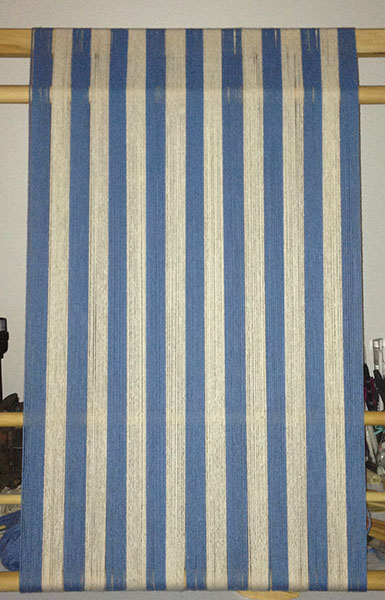A couple more definitions:
Warp Ends – one entire warp thread not just the end. On a continuous warp it is one complete revolution around the loom.
e.p.i. – ends per inch, the number of warp threads or wraps in an inch of the loom.
Sett – the number of e.p.i. per inch used for the project.
Project one was a table runner.
I used a plain weave and cotton yarn. I did not understand the information about the spacing of the warp ends, lesson not yet learned.
I did not get that the warp ends needed to be spaced far enough apart for the weft to fit. As you can see, the warps are practically on top of each other. Later I will show you what kind of havoc this brings down on the project. The warp ends are in stripes so that the weave will create a checkerboard effect. The weft will be completed with the same striping effect.
Plain weave is where the weft goes over and under alternate warp ends. I think the set I used was 10 e.p.i. I say think because I can’t remember. That is a good reason to write down all the information about a project. Not long after you finish project it kind of leaks out of the brain. lesson not yet learned.
Continuous warping was very difficult for me. Warping on my loom requires one to wrap the yarn in a particular formation. I won’t explain it just because all looms are different. I wrapped it with the tension bar half way up its space like the directions for the loom said. In tapestry, tension is so very important! lesson not yet learn. Later on in the project you will see how the wrong tension in the warp will create problems. Tension is important with all weaving, but in tapestry it needs to be very tight.
That is about all on my warp for now. Next I will explain how I set up the heddles, and what they are!
See you later!
